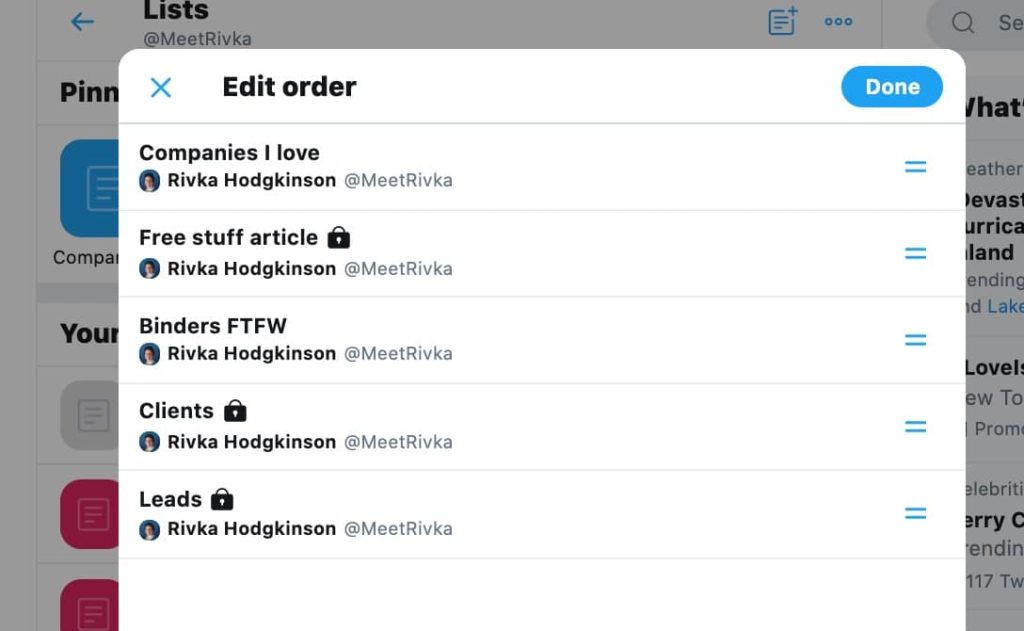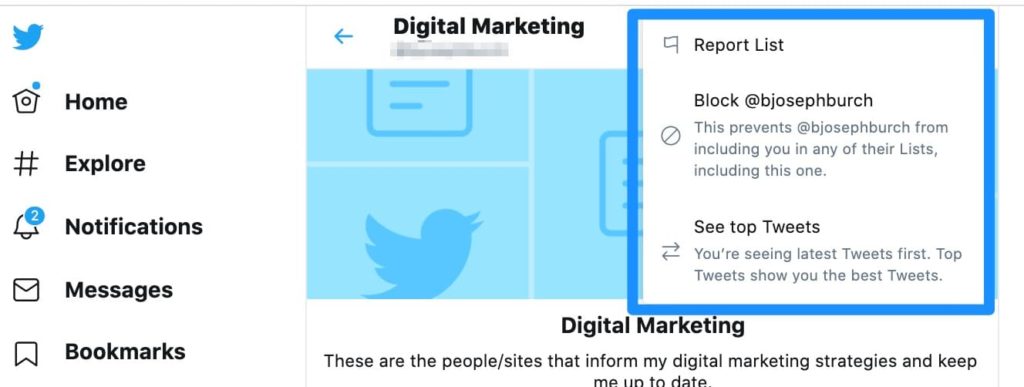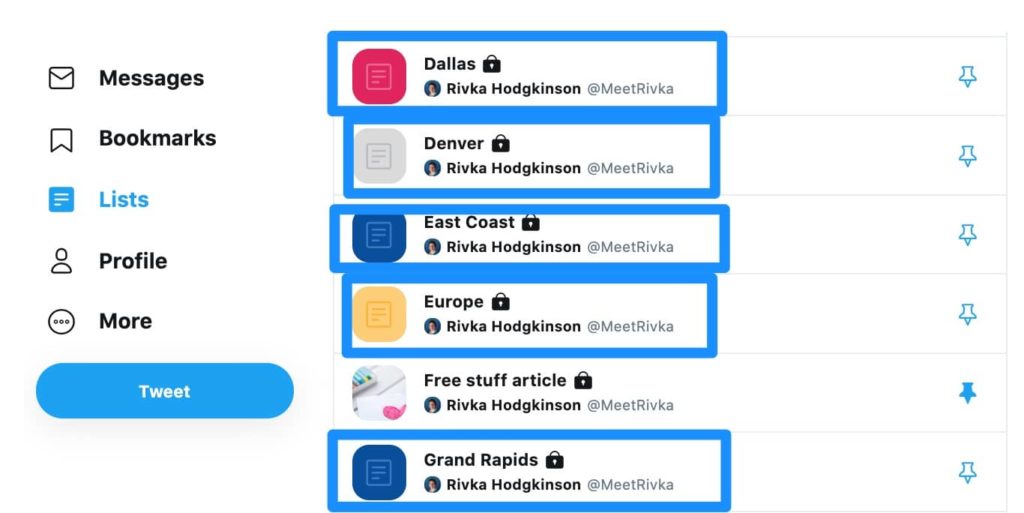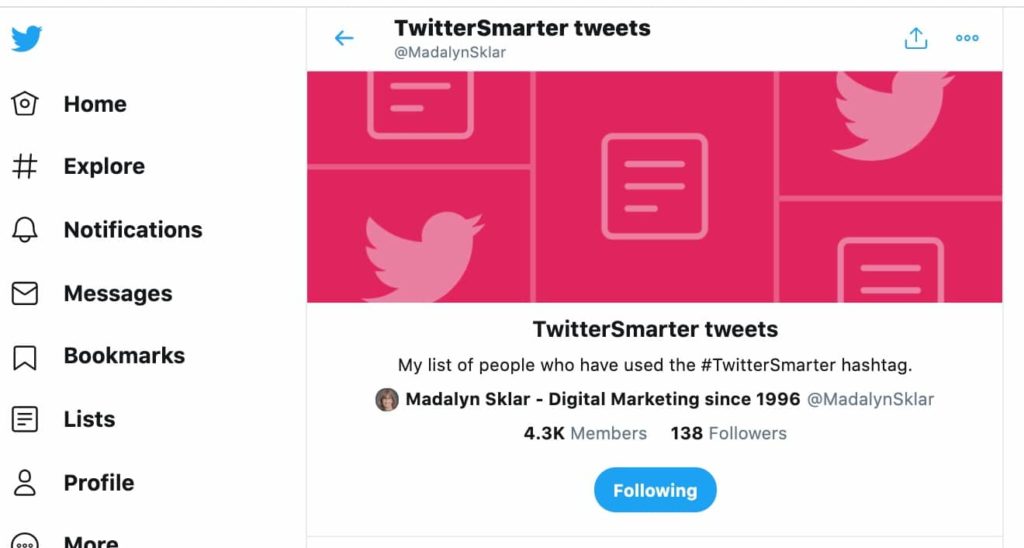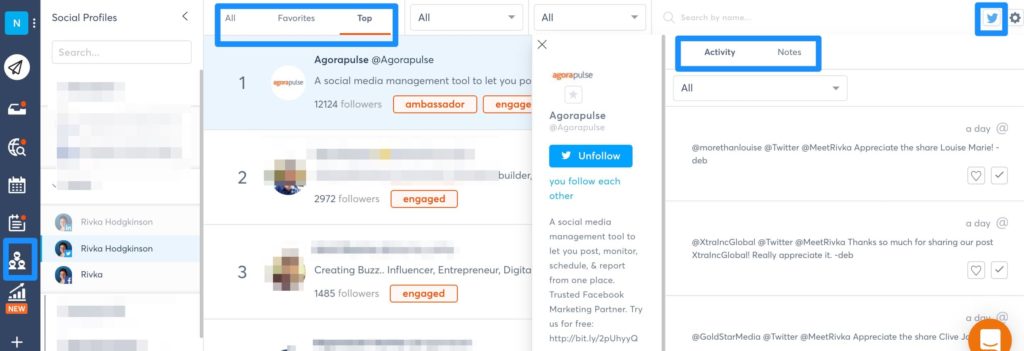You’ve made your list on X (formerly Twitter) and are seeing good things come from it. But did you know how much an X list can help your productivity? (Quick answer: A LOT.)
Are you seeing all the untapped potential of Twitter lists? Want to seize those opportunities?
In this article, you will get ideas for the types of Twitter lists you can create, see how to use lists to build your authority and brand, and where you can find out who is putting you on a Twitter list and how to take advantage of it.
Along with Twitter Moments and Topics, Lists give you the ability to discover new people and content that you might not find otherwise—even with search or listening.
Save Time by How You Use Twitter Lists
As you make more lists on Twitter, you want to make sure the most important lists to your goals are at the top.
The easiest way to do this is with pinned lists.
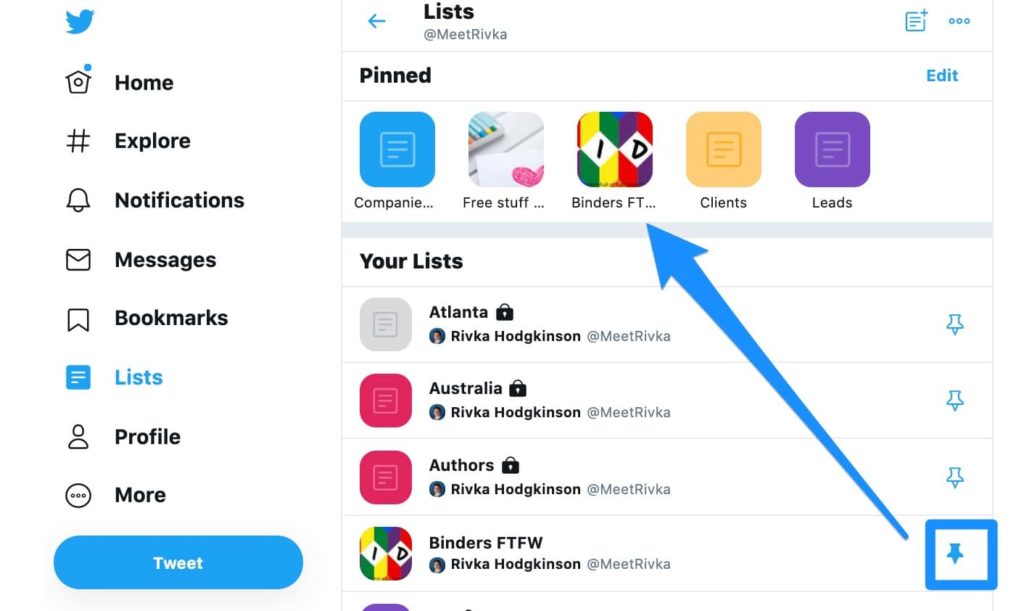
Pin your most important Twitter lists to save time.
You can include a maximum of five lists in your pinned lists.
Choose the ones you use every day. Both private and public lists can be pinned, and you can also reorder them to prioritize the pinned lists. Which lists you pin is visible only to you.
Another pro tip is to use lists in place of following an account.
You might want to do this if:
- You want to keep tabs on a competitor without letting that person know.
- The account is an authority not likely to follow you back but is a good resource to curate content.
- Your strategy does not include following other accounts.
Easily Build Your Authority with Twitter Lists
Do you consider yourself an authority in your field? Do other people know it?
Twitter lists offer a couple of different ways to show off your expertise.
Other people’s lists on Twitter help build your authority
The first is through lists that other people have added you to. You can view these by clicking the three dots at the top of your lists page.
Ask yourself the following:
- Should I follow this list?
- Are there valuable people on this list to connect with?
- Is the topic of this list helpful?
- Would this be a valuable list to share with my followers?
It is also important that you control your online brand.
If you are on a list that does not fit your brand or seems like spam, feel free to report the list and/or block the list creator from adding you to more lists.
This is also where you can decide if you want to see the list feed in chronological order or to see top Tweets first.
Now that you know what lists you are on, consider sending a tweet to the list creator thanking them for including you. This is an easy relationship-building interaction with that person.
Your own lists on Twitter help build your authority
In building authority with your own lists, the first step is to create lists that are genuinely beneficial.
Review the list ideas in the rest of the article to see what is the best fit for your audience.
Once you have taken the time to create valuable lists, don’t be afraid to share them. Tweeting a link to the list regularly is great evergreen content that you can queue as part of your social media content.
Increase Productivity by Using Twitter Lists as a Sales Tool
One category of lists to think about is for your sales funnel.
Lists can help organize your interactions with people at different points in the sales and marketing process. You will almost always want to make these lists private. You don’t want your prospective clients to feel uncomfortable, and you don’t want to give your competitors a list of who they should be reaching out to.
Create a list for each of the different stages in your sales process.
Prospective clients
You could even break this down further to potential leads and active leads, or whatever other subdivisions make sense for your internal systems.
Current clients
Do you want one list for all your clients? Lists for different types of clients?
Think about how you are using the list on Twitter to answer this question. Retweeting your current clients and congratulating them on their wins are excellent relationship-building tools.
Past clients
It is always easier to sell to someone who you have already achieved results for in the past. Staying top of mind is quicker and easier when you regularly interact with past clients. Using a Twitter list is a good way to streamline this.
Referral partners
Are there businesses that give you great referrals? Then sharing their content, liking their posts, and commenting on what they share is a good way to continue to build your trust with them.
Use a Twitter List (or More) to Watch Your Competition
Twitter is known for being the platform that is up to date with the latest trends. If your competitors are doing something new, it is likely that they will share it on Twitter.
Making lists to monitor their activity can help you respond to the market.
Create a list on Twitter of the competition
Creating a list of your active competitors is the first step. You may want to make different lists for different verticals in your business depending on the size of your company and the scope of your products and services.
Small businesses will probably only need one list for competitors. Social media marketing agencies, digital agencies, and larger teams might want to break this down further.
Keep on eye on who might start growing into a competitor
After that, start thinking about the companies that may become competitors in the future. They may not offer directly competing products or services now, but they serve a similar audience as you do and might expand their business model in the future.
To maximize the effectiveness of using lists to monitor your competition on Twitter, you will want to use this strategy in conjunction with listening.
How to Curate Content with Twitter Lists
Another type of list to include are content creation lists. Here are some examples.
Vetted accounts. These are lists of people who regularly share relevant and high-quality content on Twitter, even if they are not influencers—yet.
Industry leaders. These are the companies that come to mind immediately about a particular industry or topic area. They might be accounts like NASA, Smithsonian, Ted Talks, etc.
Influencers. These people have significant and loyal followings even though they might not be household names. If they are well-known by your specific audience then they are people you want to get to know too.
You can also use lists to help your content be shared more often.
Let’s say that you write an article for your blog post about how to make the perfect donut. And you know that in your content plan, you are going to write another one that shares your best donut filling recipe. Create a private list and add anyone who shares the first article. Then you have a perfect list of people to send individual tweets or messages with the link to the second article when it comes out.
Effective Events with Twitter Lists
Events, whether virtual or in-person, can benefit from the use of both public and private Twitter lists. In fact, events are one of the main ways that I use Twitter to be effective.
There are several ways to connect Twitter lists.
Location-based
I have a multitude of lists that I use for geographical locations. Though searches can provide some of this information, it may be left off their profile and therefore not searchable. Making my own lists for cities or areas that I travel to regularly gives me a ready-made list of people to reach out to for coffee dates and hangout times when I am in that city.
Speakers
If I am organizing an event, I will create a public list of speakers and share it with event attendees and as teaser content. It gives speakers more visibility along with helping people know why they should attend the conference or event.
If I am attending an event and the organizers have not created a list, I may take the initiative to create one instead as a way to provide value to other attendees.
Attendees of an event
In some cases, this may be a public list to help people connect to one another. Or in other cases, I may make it a private list of specific people I want to follow up with to help me remember where I met them.
Twitter chats
Often we don’t think of Twitter chats as events, but that is exactly what they are. You can create a list of all the people who participate in a particular chat or a list of people who host Twitter chats. Madalyn Sklar from the #TwitterSmarter chat does a great job of this.
Get Press Coverage Via Twitter Lists
Is getting press coverage one of your marketing goals? Yes, Twitter lists can help with that, too. Tweeting out a press release, interacting with reporters regularly, and suggesting information related to trending news are all good ways to help your company stay top of mind.
There are several types of lists you can create with this goal in mind:
- Local press
- National news
- Reporters by subject area
- Bloggers
- Relevant podcasts
Most of the time you will want to keep these as private lists so that competitors are not able to benefit from your work building the lists.
Simulate Twitter Lists on Agorapulse
If you use Agorapulse, note that it doesn’t support Twitter lists yet—but no worries, you can still do some amazing listening in on the competition via the tool. Just open up two browser tabs, one for Twitter, and the other for the Agorapulse account tab. Now, in the Twitter search function, just set the search up as “from:[handle]” and the boolean operator OR. Now, you’ll see tweets from the users listed (any of them!). In Agorapulse, you click on your Twitter profile then Settings. Go to Listening, and create a new Search. Then name your search whatever you want and copy/type in a string like the “from:[handle]” one mentioned above.
Here’s an example from The Social Media Hat‘s handy-dandy article:
You also can create searches based on words or hashtags to be able to see a broader range of the chatter going on on Twitter.
* * *
Sign up now for a FREE demo.



